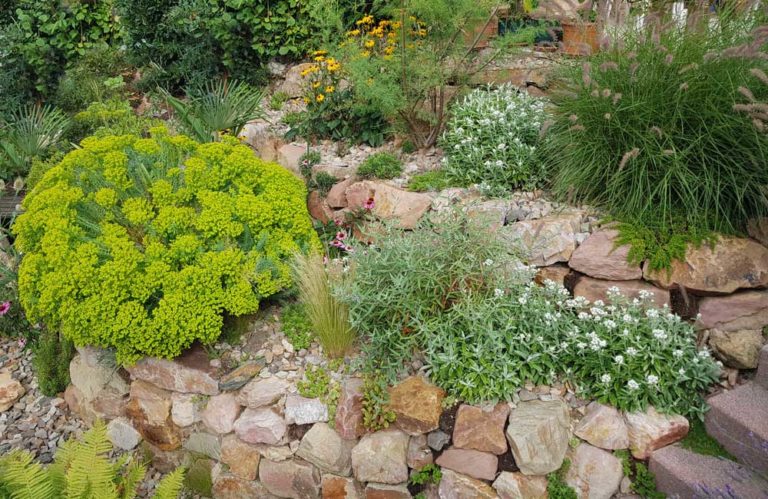
“The whole point of rock gardening is to grow little plants,” says Panayoti Kelaidis, botanical gardens evaluation coordinator. “Rock gardening is focused less on creating a scene or vista, although a good rock garden usually does that, than on revealing a subtle interplay of colour and form.”
Kelaidis suggests that for city dwellers with limited space, the miniature landscape of a rock garden is a good alternative to the conventional annual or perennial garden. Besides being on the right scale for a small setting, rock gardens are low maintenance and can provide more interest for a longer period of time. Kelaidis says, “The urban gardener can have a real diversity of plants, which makes the small garden feel big and dynamic.”
In larger yards, rock gardens require an intimate spot to show off their small-scale beauty. Small hills and slopes are a logical choice, says Kelaidis. If you have a flat space, you need to create a spot for an intimate garden. There are three reliable ways to achieve that:
- Build small mountains on your site, which is what Kelaidis’ wife did on their property. “This is the most exciting but also the most challenging option,” says Kelaidis, because you are effectively resculpting the site and have to know what you are doing.
- Create raised beds, a defining feature of most rock gardens.
- Garden in containers, which you can move around easily.
It takes imagination and creativity, but not a lot of material, to arrange rock gardens artistically, says Kelaidis. You can make something beautiful out of a boulder and a few natives, or different-sized plants in a tiny crevice garden. The choice to include plants, rocks and other elements is a highly individual enterprise, and the resulting garden design is a true expression of its creator. It’s also extremely satisfying.
Sign up here to have Handyman’s favourite stories delivered straight to your inbox.
Source: RD.com

